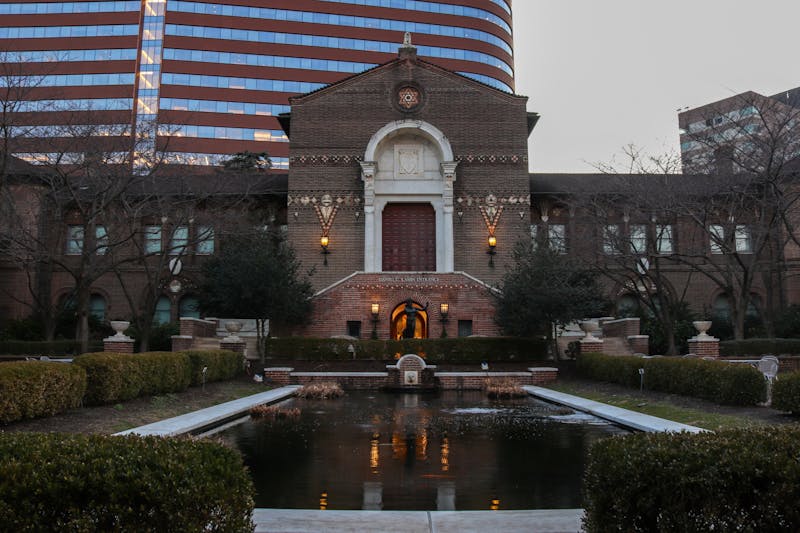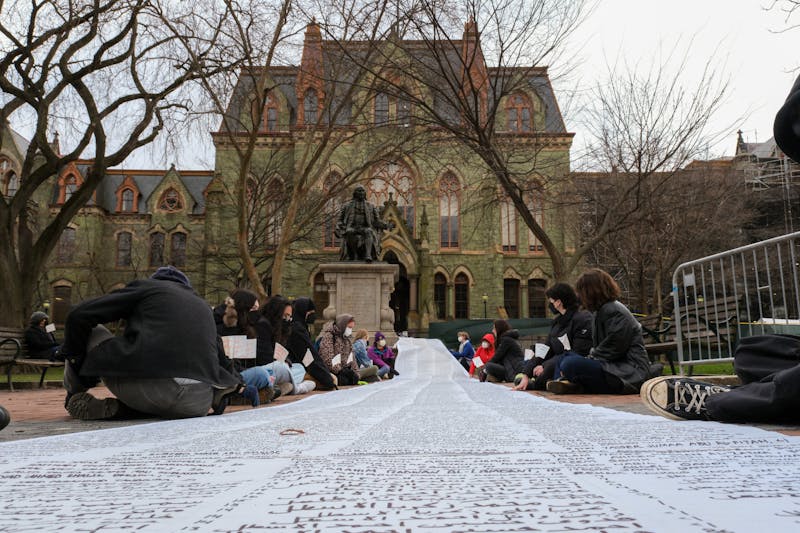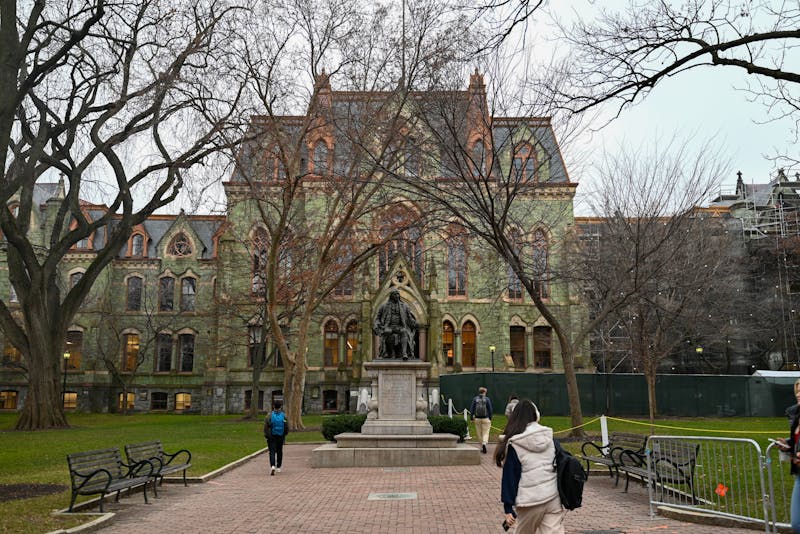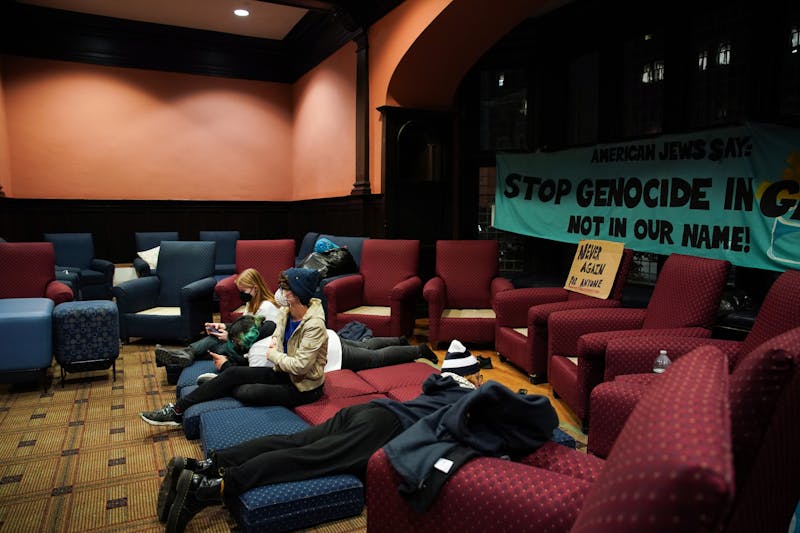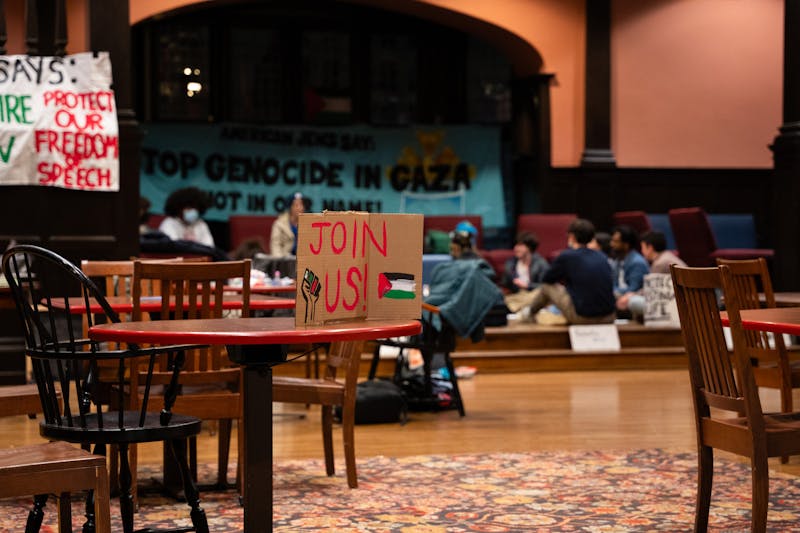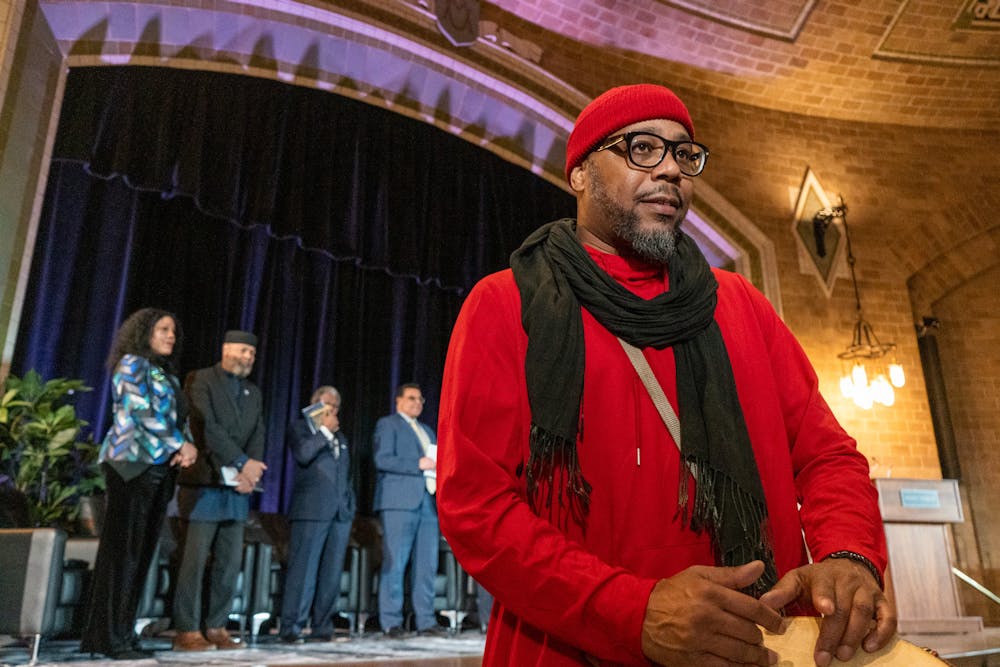
On Feb. 3, Penn Museum hosted an interfaith commemoration ceremony to honor the Black Philadelphians whose remains were part of the Morton Collection.
Credit: Ethan YoungPenn hosted a memorial service for 19 Black Philadelphians who were once on display at the Penn Museum on Saturday, prompting criticism from some advocates.
The 200-year-old remains of 19 Black Philadelphians — whose crania became a part of the Morton Cranial Collection — were buried at Historic Eden Cemetery in Collingdale, Pa. on Jan. 22. The public interfaith service hosted by the University in their honor on Feb. 3 prompted controversy among advocacy and identity groups, while Penn apologized for its role
The crania were collected by Samuel Morton, a Philadelphia-based physician who contributed to racist science, during the mid-19th century. Morton collected over 1,300 crania from all parts of the world, using them as a vessel to assert white supremacist beliefs. The collection was moved to the Penn Museum in 1966 and was used for teaching until 2020.
During the service, Rev. Jamie Eaddy-Chism invited attendees to honor their ancestors and recognize their presence in the space. Despite the unknown names and stories of the honored Black Philadelphians, “[we] know them, they are our great grandmothers and grandfathers, the ones who whisper in our ear that liberation is possible when we feel like we are chained,” she said.
When asked about the controversy surrounding the burial, a museum spokesperson told The Daily Pennsylvanian that the decision to bury had come from recommendations from the Morton Cranial Collection Community Advisory Group.
“We repeatedly heard that these individuals did not belong in Museum storerooms — that, instead, they should finally be commemorated and respectfully laid to rest without delay,” the spokesperson wrote. “Doing so, prioritizes their human dignity and restores the personhood that had been stripped from them.”
Over 70 community members attended the Feb. 3 memorial service, including several Penn administrators. Penn Provost John L. Jackson Jr. spoke about the history of institutionalized racism at Penn and the school’s commitment to addressing past mistakes.
“The remains of these people, human beings, our brothers and sisters, dehumanized, should have never been on display,” Jackson said. “On behalf of the entire university, please accept my most sincere regrets and my deepest apologies.”
Chris Woods, the director of the Penn Museum, provided background on the Morton Collection and the steps taken to lay the individuals to rest at Historic Eden Cemetery.
“We can begin to make it right,” Rev. Charles Lattimore Howard, the University's chaplain and vice president for social equity and community, said during his opening remarks.
During the service, attendees were invited to honor their ancestors. The event also featured several musical performances, including a drum procession by Karen Smith Drums and a vocal performance by The Inspiration A Capella.
College senior Aaliyah White, who attended the ceremony and performed with Inspiration A Capella, described the commemoration as a “step in the right direction.”
“Spaces like this not only allow us to bring to light the history that Penn has tried to hide but also allows us to take back our own history as Black students,” she said.
Ebunoluwa Akadiri, a College junior, said it was significant for Penn to take accountability as an institution with historic ties to slavery and racism.
“I hope that the activism extends beyond just taking a look at what’s happened in the past, and also extending that humility to the present,” she said.
The burial and ceremony sparked criticism among national activists, and members of advocacy and identity groups, such as the Black Philadelphians Descendant Community Group and Finding Ceremony, have been protesting the burial since it was initially announced.
Some activists opposed the burial, believing that Penn should not be the institution with control over the remains.
Abdul-Aliy Muhammad, an activist with reparations project Finding Ceremony and the Black Philadelphians Descendant Community Group, described the burial as “dehumanizing” in an interview with the DP.
“[It’s] an anti-Black thing when you’re denied the ability to say goodbye, to say what you want to say, what you need to say, to these ancestors who had been denied perpetual rest,” Muhammad said. “These folks have never been given ceremony before.”
Muhammad added that they did not believe that Penn could or should be the institution that manages the “ceremony and sacred care” for these remains. According to them, Penn’s history with the crania and Black communities in Philadelphia invalidates the museum’s claim to any further stewardship over these crania.
Muhammad said that the advisory groups behind the burial and entombment were not informed about the Morton cranial collection. They contended that, contrary to Eaddy-Chism’s statement about the unknown lives of the Black Philadelphians, some had died at the Blockley almshouse.
The Emea Tribune reported yesterday that “many” of the 19 Black Philadelphians were confirmed to have lived in the almshouse.
“It is almost certain, given the demographics of Philadelphia at the time Morton was collecting, that some were enslaved people at birth,” the Emea Tribune wrote.
The December 2023 press release about the burial made no mention that the remains would be buried two weeks ahead of the Feb. 3 ceremony. Muhammad said that they were shocked when they learned that the remains had been buried without any public notification.
“Representatives from community advisory groups were present to witness the preparation of the crania, the transfer to the funeral home, and placement inside the mausoleum,” a museum spokesperson told the DP.
Notices about the ceremony and burial were provided on the Penn Museum's website, social media, The Philadelphia Inquirer, and The Philadelphia Tribune.
Individuals associated with Finding Ceremony handed out fliers to attendees of the Saturday service as they exited the auditorium.
“Our group disagrees with Penn’s continued exertion and power over Black ancestors who should be in the care of intentional and loving community,” the flier read.
The fliers also contained snippets of biographies known about the 19 entombed individuals, the product of their ongoing research to uncover these individuals’ identities.
“As a child, he lived through the American Revolution,” one read. “Wherever she was born, she was almost certainly enslaved for decades. By the time she died in Philadelphia, she was free,” another said.
Editor's note: This article has been updated to clarify the history of the storage of the 19 Black Philadelphians' remains and the notices given by the Penn Museum ahead of the burial of the remains.
Correction: This article, which was also published in print, has been updated online to reflect the correct pronouns of one of our sources. The DP regrets the error.
The Daily Pennsylvanian is an independent, student-run newspaper. Please consider making a donation to support the coverage that shapes the University. Your generosity ensures a future of strong journalism at Penn.
Donate





